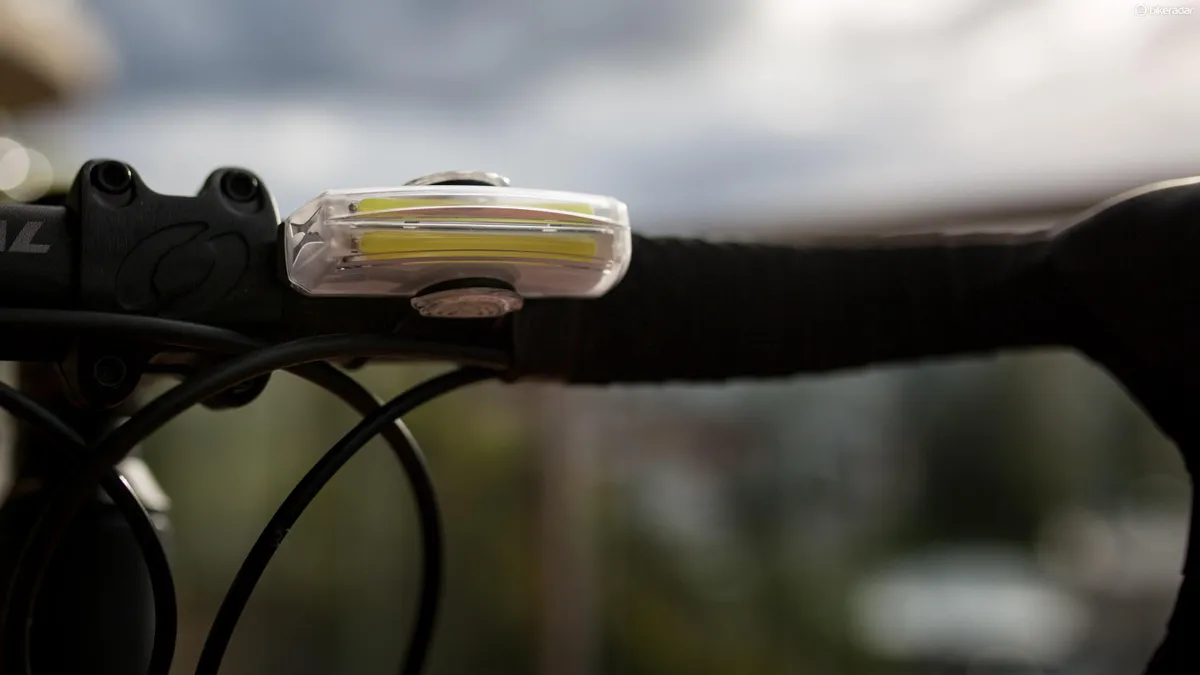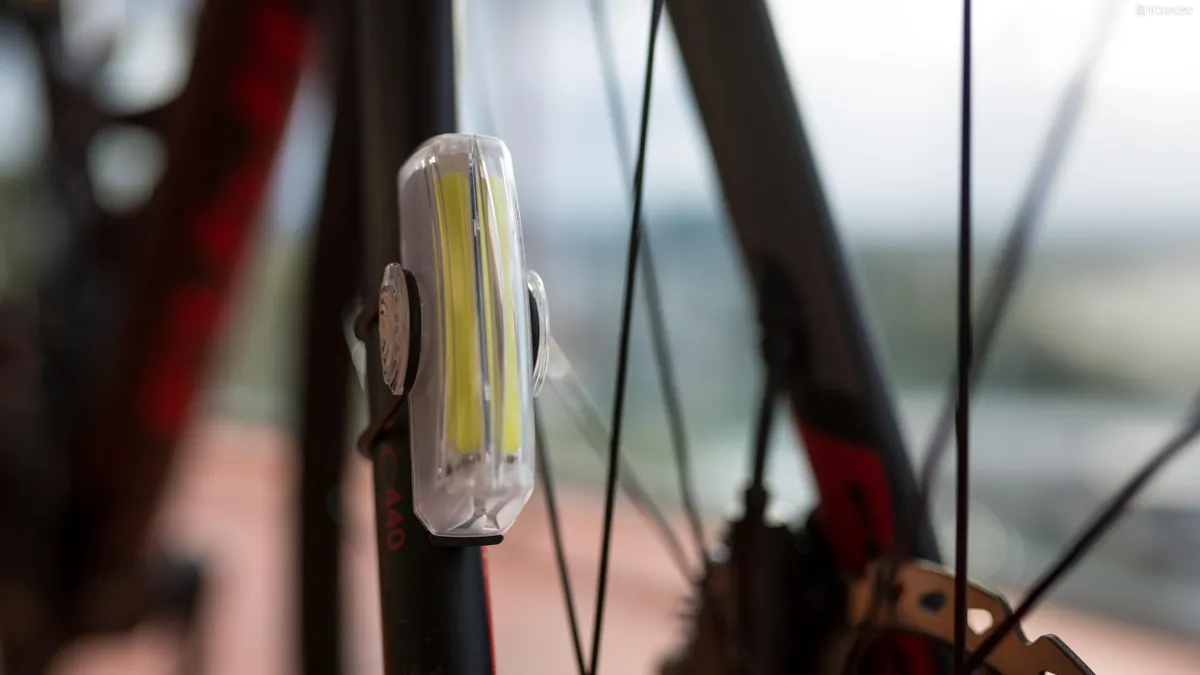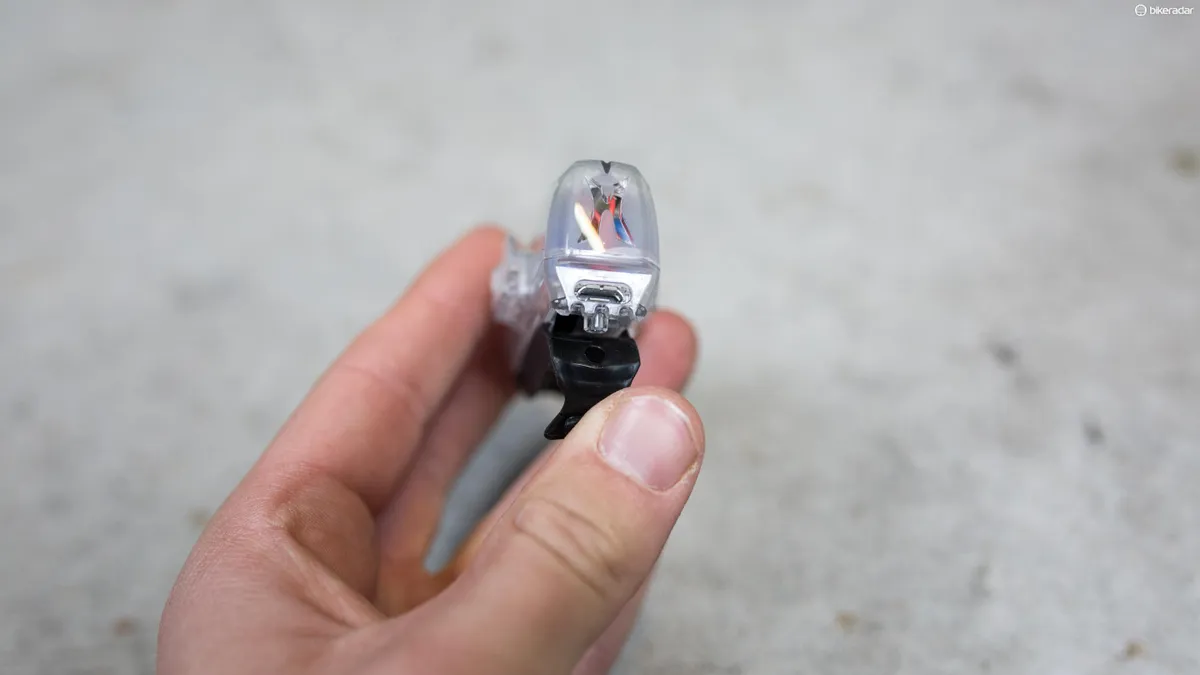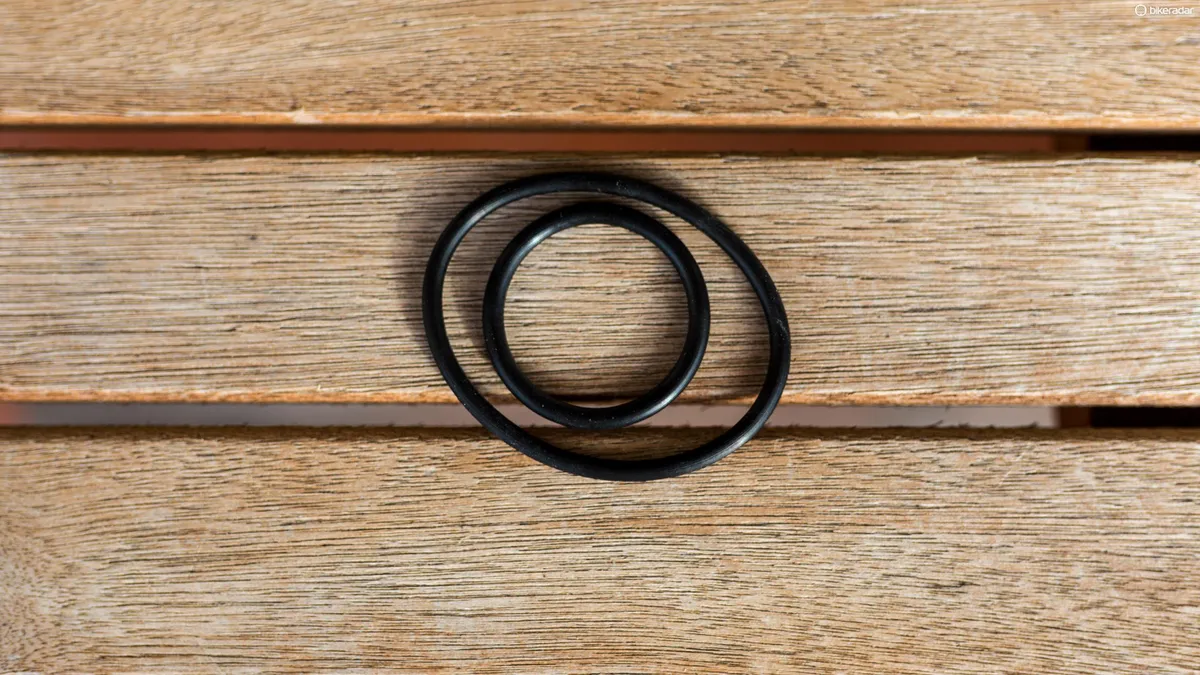Cateye has been making bike lights since 1964 when the Japanese brand created the first flashing lamp for riding. The firm has also been at the forefront of light technology, and for some time when you were looking into buying a light, you either bought a Cateye, or something else. Times have changed and the market for lights has become quite a bit more crowded, but Cateye is still in the mix.
The latest edition to the brand's range of safety lights are the Rapid X2 and X3 flashers. Based around the same basic design as the Rapid X rear lights, these flashers don't utilise the lens or reflectors inside the light to focus the beam, instead relying solely on strip LEDs — the X2 see one strip LED while the X3 gets two. The result creates a scattered beam that’s highly visible from the front and sides.
With its shape the Rapid X3 can be mounted on your bars, fork legs, head tube, racks or really any other round forward-facing tube, only governed by what you can stretch the O-ring around. Our test sample came with small and large sized bands, though the smaller one proved too small to wrap around the bars or fork legs of any of the bikes we hand on hand.

Mounting the light to your bars can prove a bit tricky. On the rear of the light, there is a rubber skirting that is designed to interface well with fork legs and similarly shaped tubes or racks. Unfortunately, when you put it on your bars this skirting doesn’t sit nicely and really just gets in the way. Given that it’s removable we wish Cateye had thrown a flat rubber backing in the box.
It's also quite long, measuring 73mm end to end, and takes up a bit of real estate when mounted on your bars. With one end pressed up against the stem's face plate, the X3 overlapped the bar tape by about 15mm or roughly the width of the finishing/electrical tape on all the drop bar bikes we had on hand. That said, on a flat bar commuter this wouldn't be an issue.
For a flasher, the Cateye Rapid X3 has plenty of power
While the Rapid X3 creates a wide, spreading flood of light, it’s not very useful for seeing in the dark as the beam doesn't travel too far ahead, but it’s not classed as a ‘headlight’ per se; instead it's designed as a light to be seen.
When mounted on your bars the light spills quite far out of the top which can dazzle you a bit, even when it's aimed slightly downwards. To combat this Cateye includes a sticker to use as shield, something we found invaluable when using the light in this orientation.
The X3's two strip LEDs are operated independently of one another by a button on either side of the light. With this, the individual lights can be set to one of six modes for a total of 48 different combinations — including setting either side of the different flashing modes for the full rave effect.
Operation is pretty simple: hold the buttons on either side to turn the light on and off, and press them to cycle through the flash modes. Between uses the Rapid X3 features mode memory, so when you go to use it again it will go back to the same setting(s) you left it on.

At 200 lumens the light is pretty bright but at full power the mini USB rechargeable Lithium Ion battery only lasts about an hour, automatically switching to flash mode when the battery gets low in an effort to squeeze as much time as possible out of the remaining charge — the buttons also light up red so should you already be on flash mode you’ll know you’re low on battery.
On the other modes, the light lasts considerably longer, but the power is reduced quite a lot, too, with the only other solid mode Low putting out 40 lumens, but the light will last five hours.
Of the four flashing modes the battery life also varies quite a bit as does the lights' output, though in the standard flash mode, it will last 30 hours.
While the solid output figures on paper sound woeful, compared to similar flashers like the Bontrager Ion 100 which puts out up to 100 lumens for a claimed one hour, 50 lumens for three hours, or flashing for 8-10 hours depending or whether it’s in day or night mode, this battery life isn’t too shabby.
Runtime:
High mode
(200 lumens): 1 hr
Low mode
(40 lumens): 5 hrs
Flashing mode
(60 lumens): 30 hrs
Rapid mode
(100 lumens): 16 hrs
Pulse mode
(40 lumens): 16 hrs
Vibration mode
(60 lumens): 8 hrs
Array Array
For a flasher, the Cateye Rapid X3 has plenty of power, and you’ll definitely be seen day and night. The trouble is it’s quite expensive: at £45 / $50 / AU$90 it’s on the upper end of what’s available for a safety light, especially given that front and rear light sets can be had for almost the same price.
That being said, for a commuter living in a busy urban area, the versatility and brightness of the light is hard to beat.

